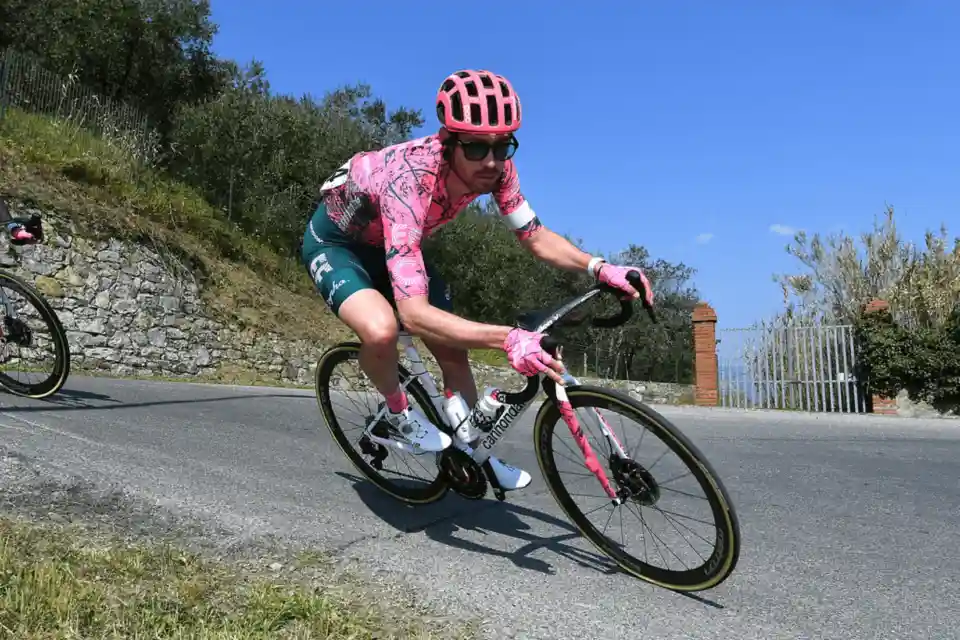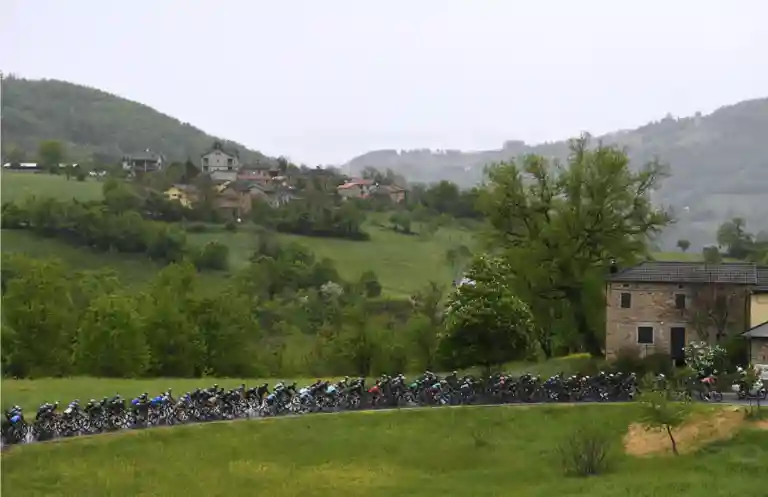Topics
- Article
- Cycling
Pro Cyclist Alex Howes on Why the Giro d’Italia is the Hardest Race on Earth

We discuss the upcoming Giro d’Italia, why it’s even more challenging than the Tour de France, and what we’ll see in WHOOP data at this year’s race.
https://youtu.be/icD1MhLv-9s Alex Howes is a professional cyclist racing for the EF Education First - Easypost team. At 34 years old, Alex has raced in the biggest events on the international circuit, including all 3 Grand Tours. WHOOP cycling guru and 4-time national cyclocross champion Jeremy Powers sat down with Alex for a Q&A on the upcoming Giro d’Italia, and what makes it arguably the most difficult race on the planet. Jeremy Powers: For those who don’t follow cycling closely, riders don’t win often. In fact, some racers will never win after they turn pro. The level of competition in professional road cycling is ridiculously high. It’s been said it’s the hardest, most physically demanding sport in the world. Alex, what do you think of that? Alex Howes: I think that's absolutely accurate. The odds in pro cycling are just sort of laughed at. In a soccer match or a football game, you line up and on paper your odds are 50-50. But in cycling, your odds at the start of a race are 1 in 180 maybe. Odds are never in your favor and enduring is just a way of life. I know a lot of riders who have never won anything.
How Does Giro d’Italia Compare to Tour de France & Vuelta a Espana?
JP: You've been in this sport for a very long time, probably more than two decades, riding and racing at an elite level. You've won races and stages of some really big ones. As we get geared up for the first Grand Tour of the year, the Giro d’Italia, you’ve raced all of these big 3-week events, can you tell us what makes them each different–the Giro, the Tour de France, and the Vuelta a Espana?

Alex competing in the 2022 Coppi e Bartali and monitoring his Key physiological Metrics with WHOOP.
AH: As they say, the Tour is the Tour, it's kind of its own big machine, big circus. There's a lot of stress with the media and stuff. You have all eyes from all around the world watching every mistake you make and every good move you hopefully make. You usually have quite a bit of heat at the Tour as well, and same with the Vuelta. The Giro is romanticized with the history around it, but the reality is that it's just hard, and not necessarily in a Watts per kilo sort of way. It's generally cold, it's generally wet, you're racing through the Dolomites in the spring. You’ll see super high WHOOP strain numbers and normally guys still have recoveries in the high yellows and low greens, but it's harder to do that when you're hypothermic for nine hours!
Giro d'Italia vs. Tour de France & What Makes the Giro So Hard
JP: Yeah, the Giro is insanely hard, with the transfers, the long stages, and the precipitation in the mountains. What else can you add that sets it apart from the Tour de France? AH: The Tour is very commercial, it's kind of a pure racer sort of race and a lot of variables get removed. But the Giro is in many ways what cycling used to be. It has huge stages, big transfers, and there's a lot of chaos–it has the X factor. JP: At the Tour, I've always heard from everyone that it's extremely high stakes. The first week is wild and intense because everyone wants to take the yellow jersey. It's super dangerous, like with what we saw last year and those crazy crashes. How is that different at the Giro? AH: France has a lot of flat roads that they can really take advantage of. They love to throw cross winds in there early and just make it a hectic mess. The counter at the Giro is everybody wants the pink jersey. I mean, it's without a doubt the best looking jersey in the sport. And they always throw in these nasty little climbing stages early on that totally surprise 95% of the peloton. The only people who know what we’re doing out there are the 4 dudes who live in the little village where you finish stages, on these tiny little roads that if you were to spread your arms out you could almost span the entire width of them–and we’re trying to funnel 180 guys through there. At the first week of the Tour, you know what's going to be bad with the wind issues and super high stress. With the Giro, you know something bad is going to happen, but you don't know what. It doesn't matter how much you study the course or how much time you spend on Google maps looking at street viewer. I mean they can't even get the team cars down some of those roads.

Riders on a very narrow road at the 2021 Giro d'Italia.
JP: This year's Giro actually has 3 rest days because of the crazy transfers. The race is going to start at Budapest, Hungary, for 3 stages then everyone will get on a plane and fly to Sicily in the south of Italy. What does that feel like in the race? AH: Yeah, the year I did the Giro we had 3 transfers in that as well. I think we flew or we went on a boat, we might've done both actually. You're sitting on the tarmac waiting to take off and it's like 115 degrees in the air. Everybody's sweating and the guys who are going to be good the next day are ones who brought 4 bottles of water instead of 2.
Riding for 3 Weeks Straight
JP: What is the last week of a Grand Tour like? You’ve been racing for 14 days and there’s 7 to go, what mentally do you have to switch to get across the finish line? AH: It's weird because it kind of goes in both directions. In one sense the human organism can just adjust to almost anything. When you're in a Grand Tour there's a point where you feel like, ‘Oh, I'll just do this forever, this is my life now.’ And it doesn't matter, it's fine. But then other times you think ‘I have a fever right now. I'm actually ill,’ and every day you make a new deal with yourself to be able to get to the finish. JP: How do you feel afterwards? Do you go home and like roll up into a ball, or do you feel like you’ve grown from the race and maybe you're supercharged? AH: For the first couple of days after you might wake up at the same time you normally would and think ‘OK, let's get moving here,’ but then you make some coffee and sit down and just melt into the couch. And not just from the physical exertion, but mentally too, you have no time to switch off during the race. But yeah, it is strange with the level of fitness that you have from it. In the weeks and months after you have this deep fatigue, where everything sorta hurts and you're tired all the time. On the other hand, then you get on the bike and you’ll do the best numbers you've ever done. It’s a weird balance.
Strain, Heart Rate & Other WHOOP Data at the Giro
JP: Last question, what should we expect to see in WHOOP data from riders at the Giro this year? AH: I think it's going to blow a lot of minds seeing guys go out and put up 20.7 strains for 15 days in a row or something. But I think the thing that's going to be really interesting is seeing the recovery scores, because generally these riders are in such good shape that they can still bounce back. And then by the end of the race pretty much everybody's max heart rate drops about by 10 beats per minute, you just can't get it up there anymore. And the discrepancy between certain riders will be interesting too, some will have 190 heart rates all day, and then others will be around 140–not related to their fitness, it's just their physiology. READ MORE: Cycling Data from Tour de France - Strain, Resting Heart Rate & HRV Photo credits: Jordan Clark Haggard, Getty Images